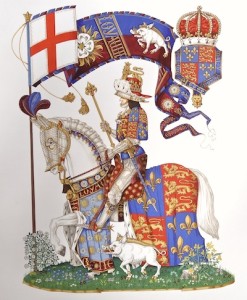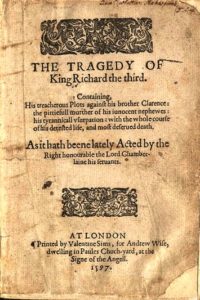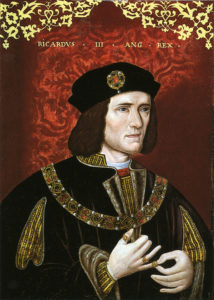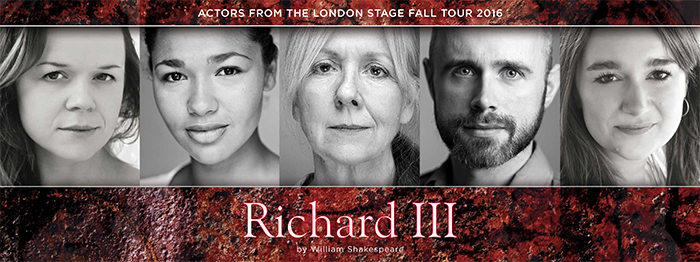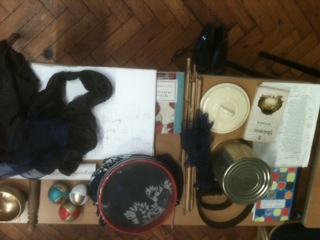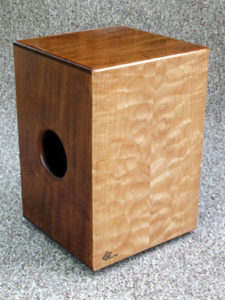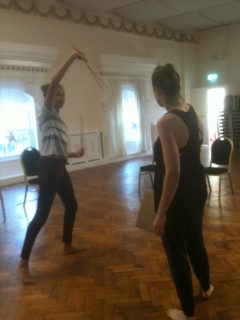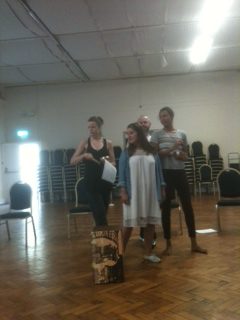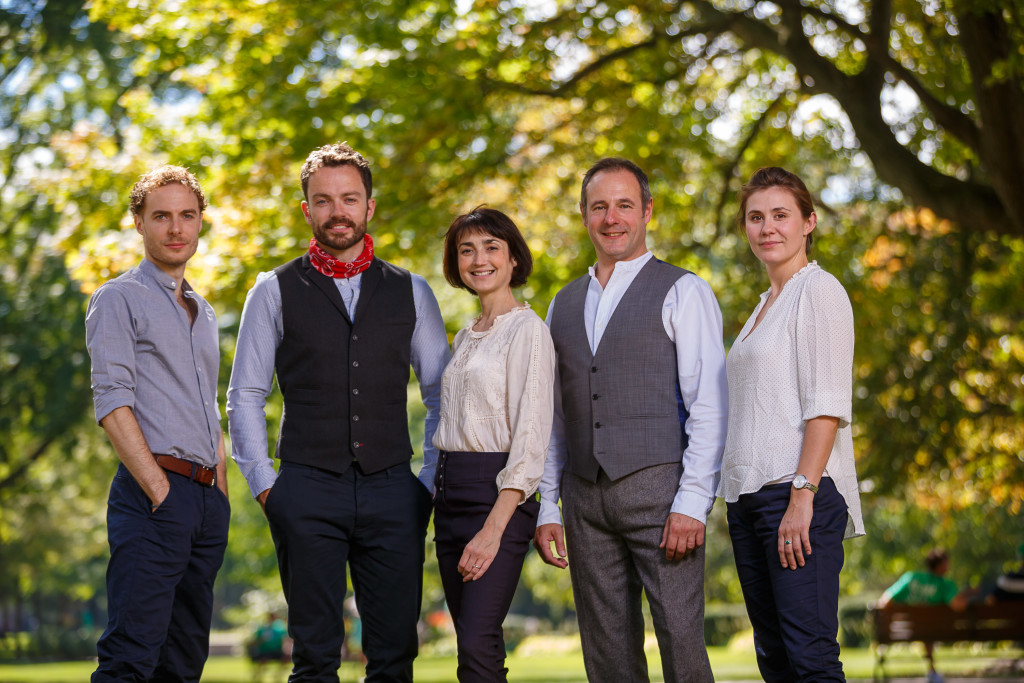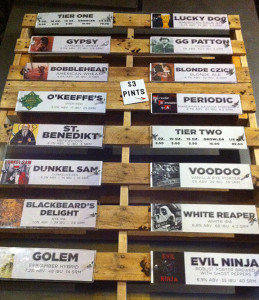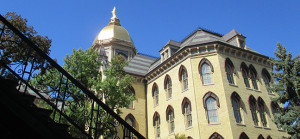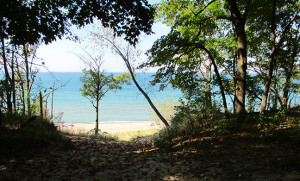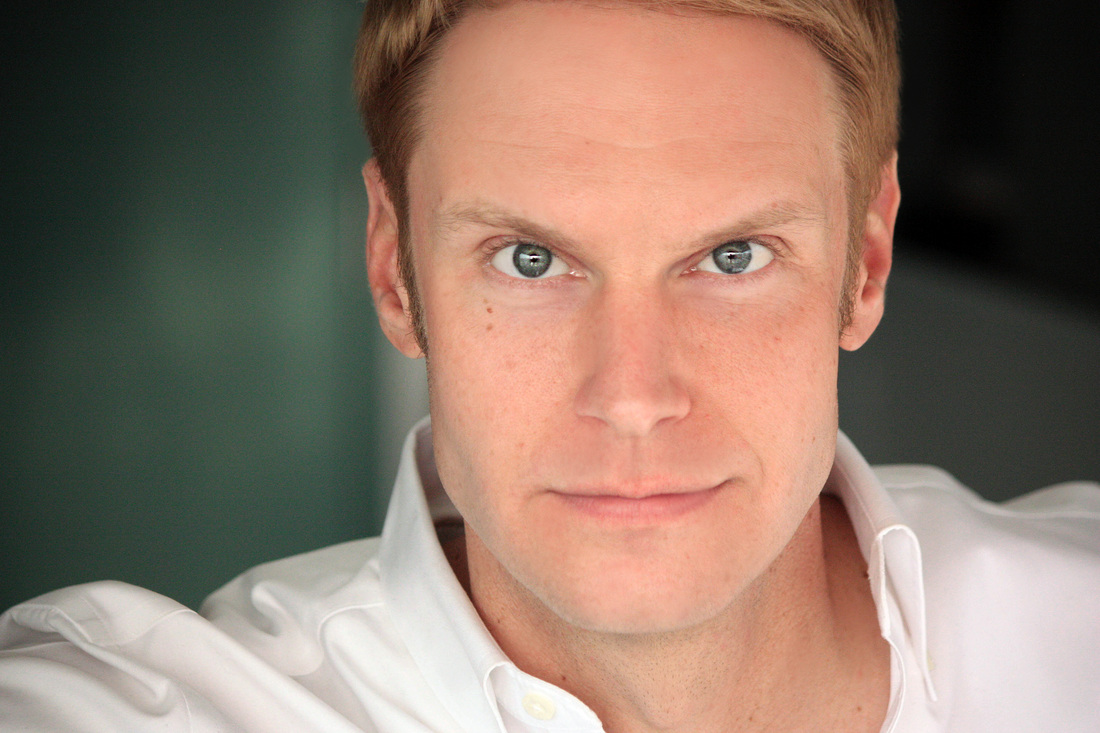You may not know this (forgive me if you do) but the real King Richard III who ruled England from 1483-1485 was the last English king to die on the battlefield: at Bosworth Field near Leicester.
He is also one of England’s greatest “villains,” mostly because he was deemed responsible for the disappearance of his two young nephews, Edward, Prince of Wales and Richard, Duke of York who went into the Tower of London in the summer of 1483 and were never seen again. They had been proved illegitimate and, though young Edward was due to be crowned, it was his uncle, Richard, Duke of Gloucester, who became king.
I put “villain” in inverted commas because many people feel even now that he was maligned especially by Shakespeare who concentrated on the wicked and comedic aspects of the man. Indeed, Shakespeare has Richard tell us in his very first speech that he is “determined to prove a villain.” Of course, dramatically, it makes Richard III an even more powerful and classy psychological thriller. It is argued that it was mostly the Tudors that wished to dishonour him.
In 1924, a group of very vehement supporters of Richard III formed a society in his name to uphold and defend him as an excellent king who passed many good laws (true: a fairer criminal justice system and granting of bail was due to him) and they have members all over the world. The Richard III Society think that Shakespeare vilely slandered Richard, that he had nothing to do with the young princes’ disappearance, and that he certainly did NOT have a curvature of the spine and physical challenges.
In Shakespeare’s play Richard is called “a bunchback’d toad” amongst other horrible names. [Click HERE for a list of the insults hurled in Richard III]
In 2012, Phillipa Langley, a member of the still flourishing Richard III Society, after much research and poring over ancient maps, managed with an historian, John Ashdown-Hill, to persuade Leicester University’s archeological department and Leicester City Council to dig up the council’s car park (parking lot in your parlance) as they both had strong evidence that Greyfriars Monastery was beneath it and that Richard could possibly be buried there. Richard’s body, history told us previously, was taken from the battlefield, stripped naked, thrown and tied over the back of a horse, and ridden around the city of Leicester to prove he was dead. Philippa believed otherwise.
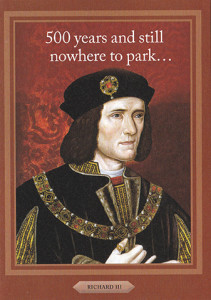 There was money enough to dig two trenches and a film crew shot a documentary about this adventure. One of the first shots is of the rather beautiful and slightly nervy and terribly British Phillipa standing on a seemingly randomly painted letter ‘R’ (some old designated spacing I imagine) saying tremulously: “I don’t know why but I have the most extraordinary feeling that he’s right under here”…and HE WAS! In the very first hours of the very first day of the dig, they found first some legs and then a skull which they assumed (because of its awkward position) was another body on top ,only to discover that it was someone with a severely curved spine. It is worth watching The King in the Car Park solely for Philippa’s reaction as she looks down to the skeleton. You can watch she and the Society’s belief in Richard’s normal physicality shatter on screen. Matt, the lead archeologist of the dig, said that if they had chosen to dig 50 centimetres to the right, they would never have discovered his skeleton. The Home Office had to be called as human bones had been found, but the dig continued. It was later discovered that a descendant of Richard III’s sister, a Canadian cabinet maker living in London called Michael Ibsen, had exactly the same DNA as the skeleton. They truly had found a “King in a car park,” 527 years after his death.
There was money enough to dig two trenches and a film crew shot a documentary about this adventure. One of the first shots is of the rather beautiful and slightly nervy and terribly British Phillipa standing on a seemingly randomly painted letter ‘R’ (some old designated spacing I imagine) saying tremulously: “I don’t know why but I have the most extraordinary feeling that he’s right under here”…and HE WAS! In the very first hours of the very first day of the dig, they found first some legs and then a skull which they assumed (because of its awkward position) was another body on top ,only to discover that it was someone with a severely curved spine. It is worth watching The King in the Car Park solely for Philippa’s reaction as she looks down to the skeleton. You can watch she and the Society’s belief in Richard’s normal physicality shatter on screen. Matt, the lead archeologist of the dig, said that if they had chosen to dig 50 centimetres to the right, they would never have discovered his skeleton. The Home Office had to be called as human bones had been found, but the dig continued. It was later discovered that a descendant of Richard III’s sister, a Canadian cabinet maker living in London called Michael Ibsen, had exactly the same DNA as the skeleton. They truly had found a “King in a car park,” 527 years after his death.
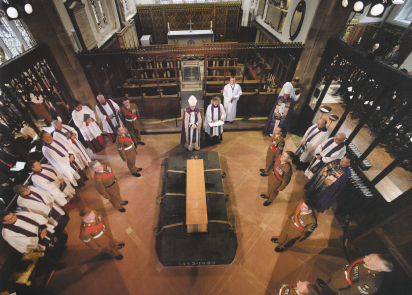 Phillipa is a fantastic woman who doggedly pursued her instincts and who honoured this man, whatever his misdemeanours. She keeps saying all the way through, often weeping, “I just keep thinking about the man, the human being he was.” Two and a half years later he was interred at Leicester cathedral in an absolutely beautiful coffin made by his descendant, Michael Ibsen. Gosh, it’s nearly as thrilling as our play.
Phillipa is a fantastic woman who doggedly pursued her instincts and who honoured this man, whatever his misdemeanours. She keeps saying all the way through, often weeping, “I just keep thinking about the man, the human being he was.” Two and a half years later he was interred at Leicester cathedral in an absolutely beautiful coffin made by his descendant, Michael Ibsen. Gosh, it’s nearly as thrilling as our play.
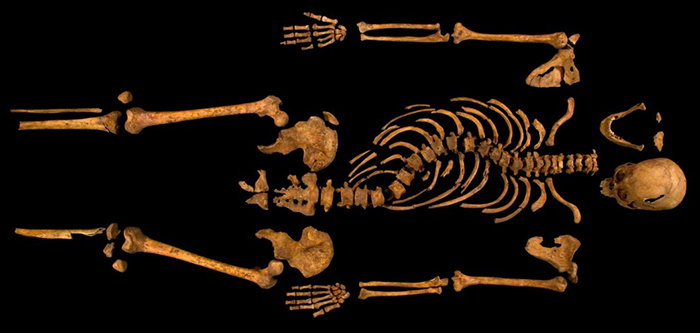 One more wonderful thing, bearing in mind our gender blind casting and me — a woman — playing Richard, is that when the osteologist was first examining the bones she (for a goodly while) thought it was the skeleton of a woman because the hip bones were slightly larger than a male and the forearms very delicate and “gracile”…just like mine. Hurrah!
One more wonderful thing, bearing in mind our gender blind casting and me — a woman — playing Richard, is that when the osteologist was first examining the bones she (for a goodly while) thought it was the skeleton of a woman because the hip bones were slightly larger than a male and the forearms very delicate and “gracile”…just like mine. Hurrah!
— Liz Crowther
BREAKING NEWS — Another King found in a car park just this week! The UK’s Telegraph newspaper has the whole story: Another car park, another King: ‘Henry I’s remains’ found beneath tarmac at Reading Gaol

